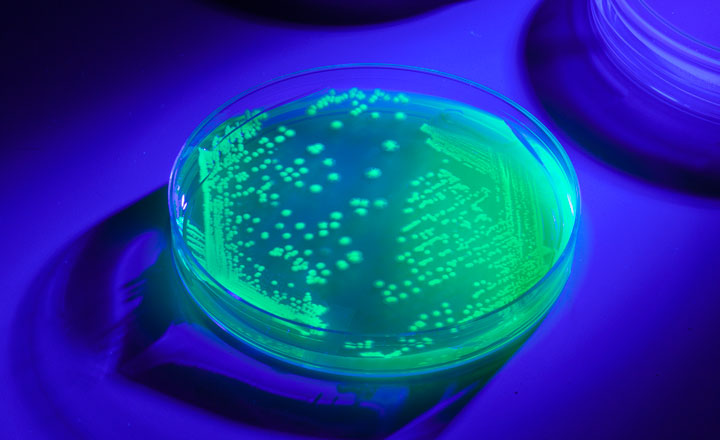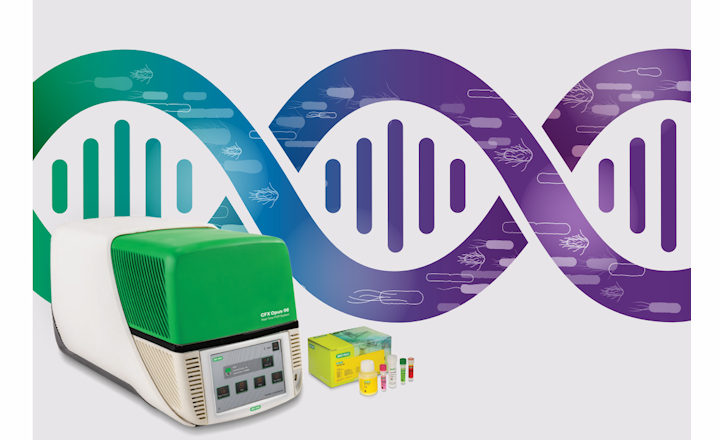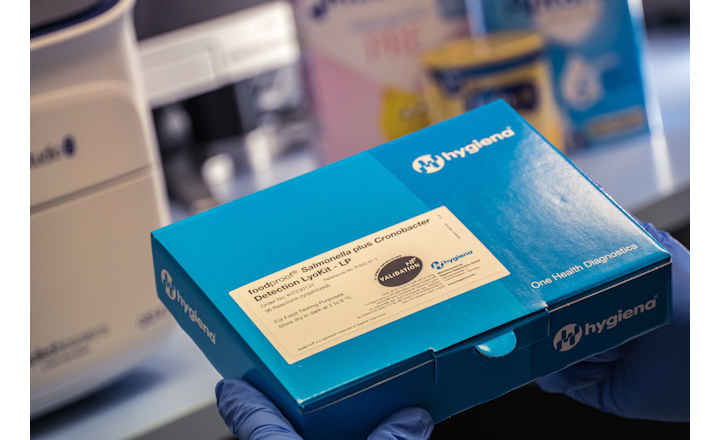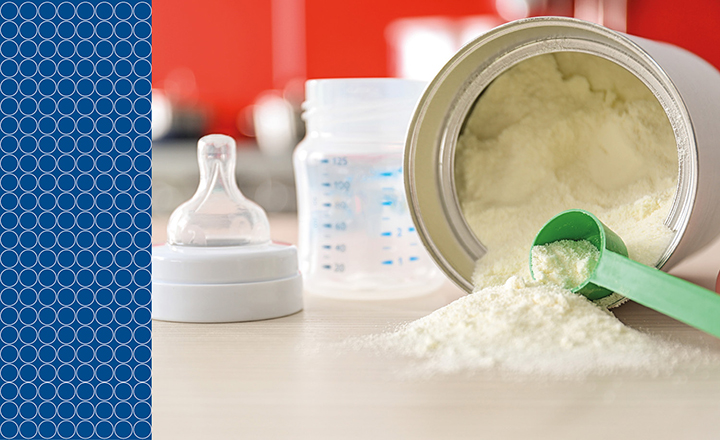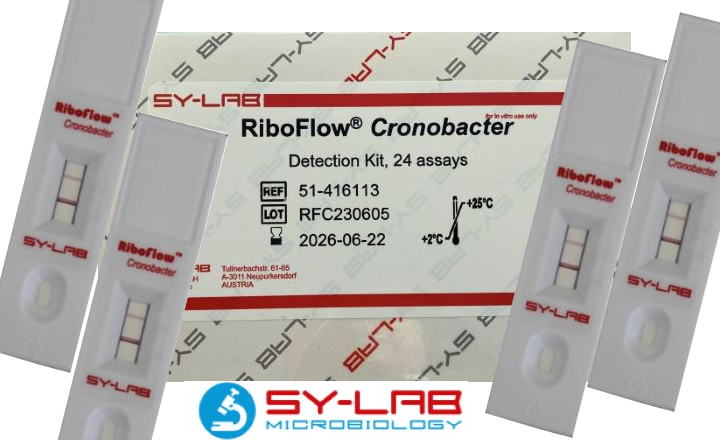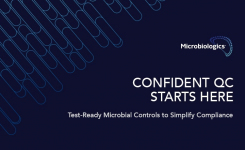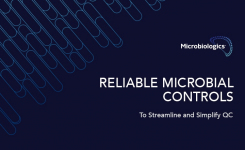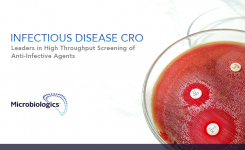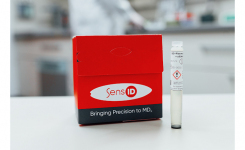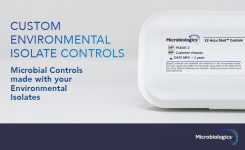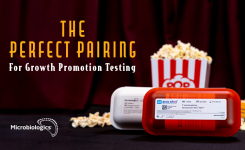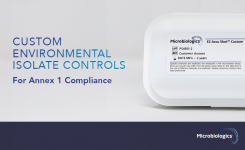Cronobacter sakazakii, formerly Enterobacter sakazakii, is a gram-negative bacterium that belongs to the Enterbacteriaceae family. It is found in the environment, commonly on plant and organic materials, and can survive very dry conditions. The bacterium has been isolated from dry foods such as powdered milk, herbal teas and powdered infant formula. Cronobacter spp. infections are rare; however, they can be deadly for infants, especially those born prematurely.1,2 Over 90% of Cronobacter spp.infections in infants have been linked to powdered infant formula.1
Colony Appearance:
Cronobacter sakazakii colonies on sheep blood agar are medium size, circular colonies with a yellow-tan color and a glistening appearance.
Microscopic Characteristics:
Cronobacter sakazakii is a gram-negative, rod-shaped bacterium.1
Conditions for Growth:
Cronobacter sakazakii is considered a facultative anaerobe known to grow at a wide range of temperatures from 5 – 44°C. Its optimal temperature range is 34 – 37°C, and it grows well on non-selective or selective media. Cronobacter sakazakii has a heteropolysaccharide capsule resistant to desiccation and osmotic stresses, meaning it can survive for extended periods of time in dry environments. Cronobacter spp. are acid tolerant which makes them resistant to the low pH of the human stomach, and they can form biofilms, making them resistant to disinfectants.1
Habitat:
The natural habitat for Cronobacter spp. is primarily plant and organic material. However, it has been isolated from a variety of foods including cheese, meat, powdered milk, dry cereal and spices. Powdered infant formula is the most commonly discussed due to the high risk to infants.1
Powdered infant formula is not considered sterile. Precautions are taken to monitor the product, but producing sterile powdered infant formula is not possible through current manufacturing processes.5 The product can become contaminated from raw materials, during the production process, or at home by the consumer through contaminated water or feeding items.2
Pathogenicity:
Cronobacter sakazakii infections can happen to anyone, but are most common in infants. Infections typically cause sepsis or meningitis. A meningitis infection can result in a brain abscess or other complication that can cause long-term neurological issues. Infants under two months old, those born prematurely and those with lower immune function due to illness or medical treatments are at a higher risk of Cronobacter sakazakii infections. 2,3
Cronobacter sakazakii, although rare, can cause infections in adults as well. The common symptoms are diarrhea and urinary tract infections. The elderly or those with compromised immune systems may experience more severe symptoms such as bloodstream or respiratory infections. 2,3,4
Environmental Risk:
Due to the adaptable nature of this organism and its resistance characteristics, it’s difficult to list specific target environments. Cronobacter sakazakii could be found in both wet and dry environments.
Is it necessary to test all food products for Cronobacter sakazakii? Not necessarily. However, considering the risks to infants, powdered infant formula or powdered milk is a large focus when testing for Cronobacter spp..
A number of steps can be taken by manufacturers to detect Cronobacter sakazakii in their final product:
- Educate laboratory personnel on how to identify Cronobacter sakazakii morphology or use an identification system that can detect this organism
- Test raw ingredients for Cronobacter sakazakii
- Test final products for the presence of Cronobacter sakazakii
- Conduct environmental monitoring samples to detect Cronobacter sakazakii in the manufacturing facility
It is also important that consumers take precautionary measures to prevent infections. According to the Centers for Disease Control and Prevention (CDC), several steps can be taken to prevent Cronobacter sakazakii infections from powdered infant formula: 3
- Carefully clean, sanitize and store feeding items safely, including:
baby bottles
other feeding items
breast pump parts
- Prepare powdered infant formula safely. The best way to prepare formula is to follow the steps below:
Keep powdered formula lids and scoops clean
Close containers of infant formula or bottled water as soon as possible
Use warm water to at least 158 °F /70 °C and pour it into the bottle
Carefully shake, rather than stir the bottle.
Cool the formula to ensure it is not too hot before feeding your baby
Use formula within two hours of preparation and throw away the unused formula
If you do not plan to use the prepared formula right away, refrigerate it immediately and use it within 24 hours. Refrigeration slows the growth of germs and increases safety.
- Practice proper hygiene. Always wash your hands with soap and water during the following times:
Before preparing and feeding bottles or foods to your baby
Before touching your baby’s mouth
Before touching pacifiers or other things that go into your baby’s mouth
After using the toilet or changing diapers
If soap and water are not available, use an alcohol-based hand sanitizer with at least 60% alcohol. Hand sanitizer with at least 60% alcohol is effective in killing Cronobacter spp.
Taxonomy
Green Fluorescent Protein Marked Microbial Controls for Food Safety
Microbiologics is a leading provider of ready-to-use microbial reference materials for food safety quality control. UV-BioTAG™ is their line of microbial control strains containing green fluorescent protein (GFP) markers. Designed specifically for food microbiology testing, UV-BioTAG control cultures visibly fluoresce under ultraviolet (UV) light, allowing laboratories to quickly and reliably differentiate QC cultures from contaminants. This is incredibly powerful as laboratories have a very short window of time to identify pathogens and investigate a positive result. If colonies are recovered from a food sample and they do not fluoresce under UV light, cross-contamination from UV-BioTAG control strains can be instantly ruled out as the cause. Microbiologics offers Cronobacter sakazakii in their UV-BioTAG product format, as well as many other common food pathogens.
Visit IAFP Booth #801 to learn more or follow this link to the Microbiologics site. Alternatively use the Request Information button below.
References:
1 Cronobacter Species Contamination of Powdered Infant Formula and the Implications for Neonatal Health (2015)
2 Cronobacter Expanded Information (2015)
3 Learn About Cronobacter Infections (2017)
4 CDC Warns of Cronobacter in Powdered Milk, Infant Formula (2016)
5 NSW Food Authority, Microbial Quality of Powdered Infant Formula (2011)


